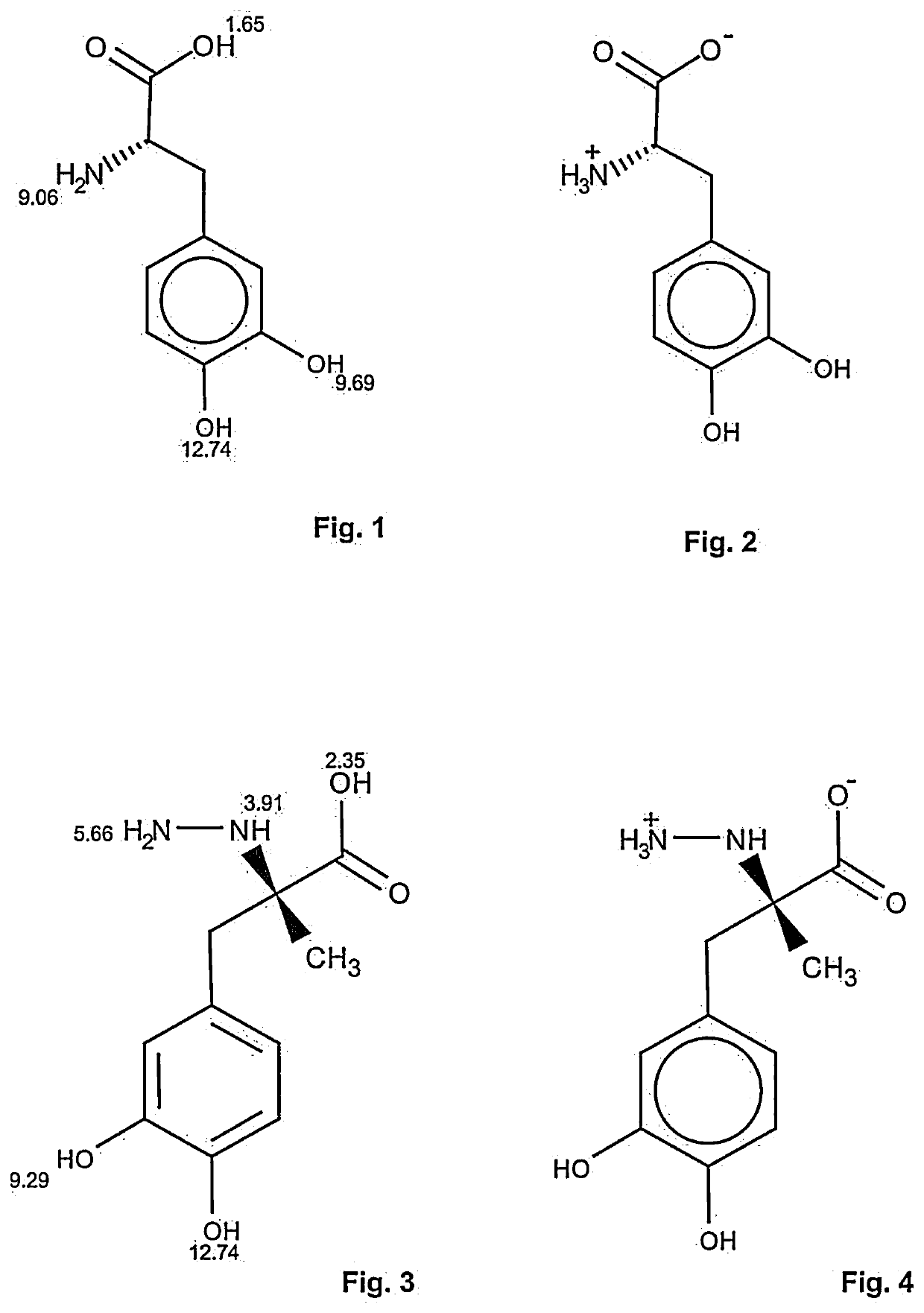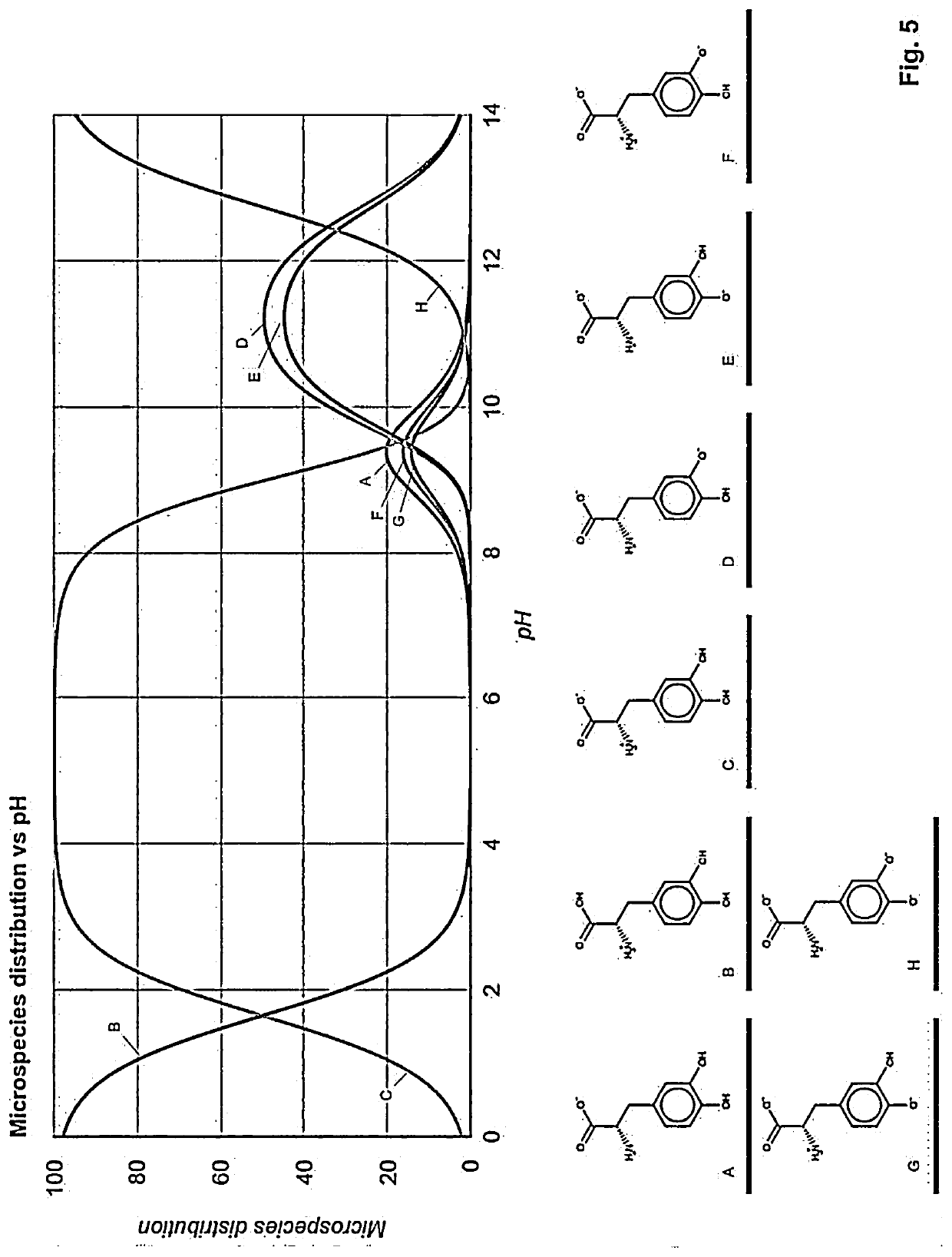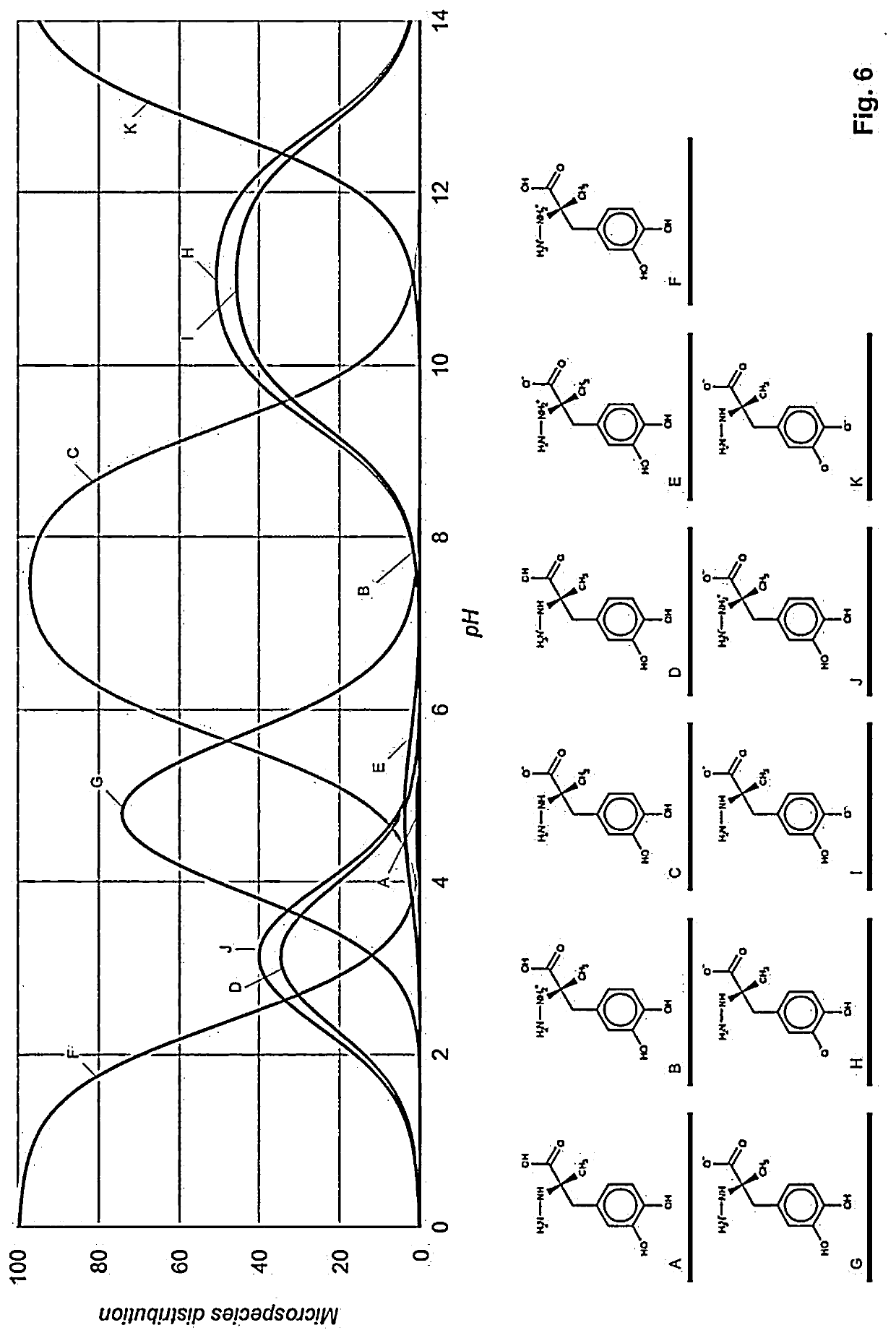Levodopa infusion solution
a technology of levodopa and infusion solution, which is applied in the field of pharmaceutical products, can solve the problems of cognitive and behavioural problems, development of on-off symptoms, and development of on-off symptoms, and achieve the effects of reducing the physical stability of over-saturated solutions, reducing the toxicity of levodopa, and reducing the toxicity of over-saturated solutions
- Summary
- Abstract
- Description
- Claims
- Application Information
AI Technical Summary
Benefits of technology
Problems solved by technology
Method used
Image
Examples
example 1
[0520]A stock solution (pH[0521]50 mg / ml levodopa[0522]5 mg / ml carbidopa monohydrate[0523]5 mg / ml sodium metabisulphite[0524]0.303 M HCl[0525]Aqua sterile
[0526]The mixing of the stock solution and the buffering solution containing the buffer component trometamol and glucose (approx. proportion acidic stock to basic solution of trometamol and glucose was 1:1) was tested in 3 similar set-ups of samples as shown in the following table. All batches were prepared by adding Addex-THAM (or a trometamol solution produced in-house; pH approx. 9) and glucose produced by B Braun (or glucose solution produced in house). In 001C glucose was first stirred into the solution, then trometamol. In 001 D and E both solutions were mixed prior to being stirred into the solution.
TABLE 1Physical stability of levodopa and carbidopa aftermixing the stock and the buffering solution.Samples001 C001 D001 ELevodopa (mg / ml)101010Carbidopa (mg / ml)111Sodium metabisulphite (mg / ml)111Trometamol (mg / ml)8.08.08.8Gluco...
PUM
| Property | Measurement | Unit |
|---|---|---|
| pH | aaaaa | aaaaa |
| pH | aaaaa | aaaaa |
| pKa | aaaaa | aaaaa |
Abstract
Description
Claims
Application Information
 Login to View More
Login to View More - R&D
- Intellectual Property
- Life Sciences
- Materials
- Tech Scout
- Unparalleled Data Quality
- Higher Quality Content
- 60% Fewer Hallucinations
Browse by: Latest US Patents, China's latest patents, Technical Efficacy Thesaurus, Application Domain, Technology Topic, Popular Technical Reports.
© 2025 PatSnap. All rights reserved.Legal|Privacy policy|Modern Slavery Act Transparency Statement|Sitemap|About US| Contact US: help@patsnap.com



